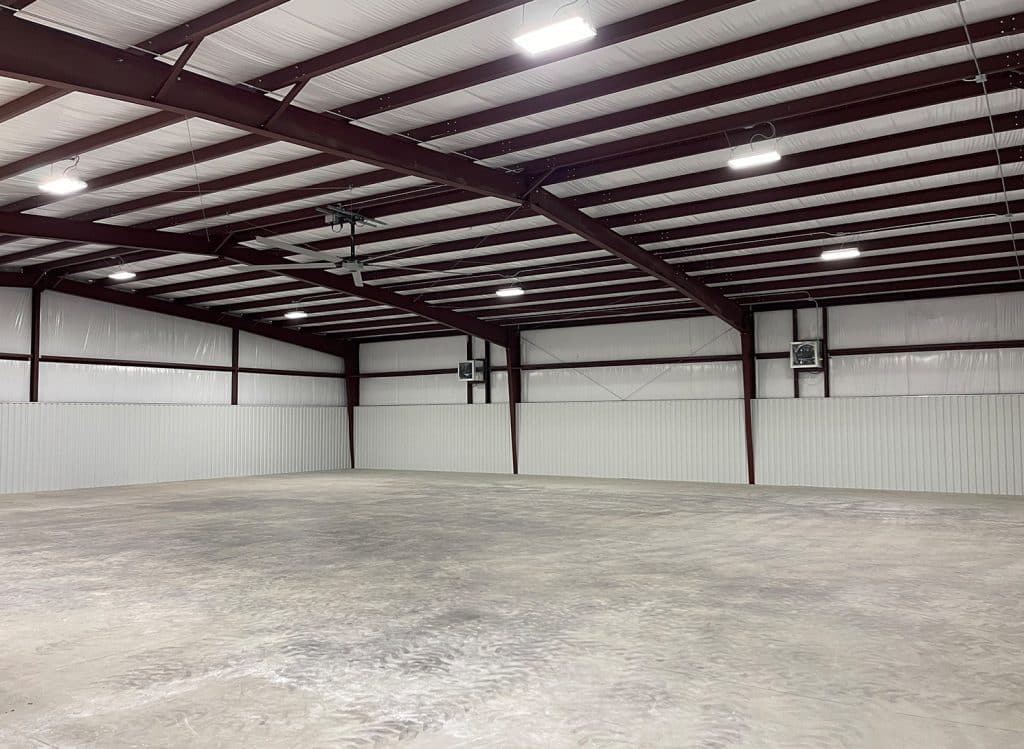views
Sound quality can make or break the atmosphere in a room. Whether you're working in a noisy office, enjoying your favorite music, or watching a movie, the acoustics of your space play a significant role. Acoustic ceiling panels are the solution to many of these sound-related issues, offering both aesthetic and practical benefits.
In this blog, we’ll dive into:
-
✅ What acoustic ceiling panels are
-
✅ The various benefits they provide
-
✅ Types of acoustic ceiling panels
-
✅ Step-by-step installation tips
Let’s explore how these panels can help transform your space and improve its sound quality. 🎶🔇
🎯 What Are Acoustic Ceiling Panels?
Acoustic ceiling panels are specialized sound-absorbing materials designed to improve the sound environment of a room. These panels are usually installed on the ceiling to reduce unwanted noise, echoes, and reverberations, making the space more comfortable for both work and leisure. The primary function of these panels is to absorb sound rather than reflecting it off hard surfaces, which can lead to unpleasant echoes or excessive noise levels.
The materials used for acoustic ceiling panels vary, but they are generally made from porous substances such as:
-
Fiberglass – Offers excellent sound absorption and is often used in commercial spaces.
-
Mineral wool – A fire-resistant and eco-friendly option that provides great soundproofing.
-
Foam – Lightweight and affordable, perfect for home studios or small spaces.
-
Wood wool – A natural material offering both soundproofing and an aesthetically pleasing look.
Depending on your needs, you can choose from a variety of shapes, sizes, and finishes to match the design of your space. Acoustic panels are typically installed in spaces where good sound quality is crucial, including:

-
Home theaters for better movie experiences 🎬
-
Recording studios to create clear, distortion-free sound 🎙️
-
Offices to reduce noise and improve focus 🏢
-
Restaurants and cafés to create a more comfortable dining experience 🍴
These panels can make a significant difference in how sound behaves in a room, creating a quieter, more controlled environment.
💡 Benefits of Acoustic Ceiling Panels
There’s more to acoustic ceiling panels than just soundproofing. Let’s explore the key benefits these panels bring to any room:
🔇 1. Improve Sound Clarity & Reduce Echo
In large, empty rooms with high ceilings or hard surfaces (like concrete or tile), sound tends to bounce around, causing echoes and reverberation. This results in muffled conversations, unclear speech, and poor audio quality. Acoustic ceiling panels are specifically designed to absorb these sound waves, improving the clarity of speech and quality of music or video playback.
With these panels in place:
-
Voices will sound clearer
-
Music will be more vibrant
-
Your audio setup will perform better
For example, in a recording studio, every voice or instrument needs to sound as clear as possible. Acoustic panels help in tightening the audio and getting rid of unwanted reverberation.
🧘 2. Increase Comfort, Focus & Productivity
Noise distractions can reduce productivity, increase stress, and even affect mood. Whether in an office or a classroom, too much noise can lead to fatigue, a lack of concentration, and miscommunication. Acoustic ceiling panels help reduce overall noise levels, allowing for a more peaceful environment.
In the workplace, soundproofing can:
-
Enhance focus during meetings or tasks that require concentration.
-
Lower stress levels by blocking out external noise distractions.
-
Improve the quality of virtual meetings, as sound clarity is improved.
For example, in an open-plan office, conversations, phone calls, and the general buzz of activity can become overwhelming. Acoustic panels help reduce the disruptive noise, making the space more productive and comfortable.
🎨 3. Aesthetic & Customizable Design
One common misconception about acoustic ceiling panels is that they are purely functional and not very visually appealing. However, today’s panels are highly customizable. They come in various shapes, sizes, colors, and even textures. Whether you want your panels to blend seamlessly into the ceiling or serve as a bold design feature, the options are limitless.
For example:
-
Fabric-wrapped panels allow you to choose from different colors to match your interior style.
-
Wooden panels can bring a natural aesthetic to your space while also absorbing sound.
-
Geometric and 3D-shaped panels add a contemporary design element to any room.
These panels can be designed to:
-
Match the room’s color scheme and blend in with existing décor.
-
Act as a centerpiece, with bold patterns and artwork.
-
Add visual interest while serving a practical purpose.
Whether you prefer a minimalist look or a vibrant, modern design, acoustic panels can elevate your space.
🌱 4. Environmentally Friendly Options
If sustainability is important to you, you'll be happy to know that many acoustic ceiling panels are made from environmentally friendly materials. Some panels are crafted from recycled plastic bottles (PET), wood fibers, or other sustainable resources. These options are not only eco-conscious but also highly effective in absorbing sound.
In addition, these panels often come with:
-
Low-VOC (volatile organic compound) finishes, making them safe for indoor air quality.
-
Fire-resistant properties, ensuring safety and durability.
-
Long-lasting performance, meaning you won’t need to replace them frequently.
These eco-friendly options provide the perfect balance of sustainability and high-quality soundproofing.
🛠️ 5. Easy to Install & Maintain
Acoustic ceiling panels are designed to be lightweight and easy to install. Depending on the type of panel, installation can be done by a DIY enthusiast or a professional, though some larger commercial installations may require expert help. Many panels come with pre-installed hooks or adhesive backing, making the installation process fast and simple.
Maintenance is also a breeze:
-
Most panels can be wiped down with a damp cloth to remove dust and dirt.
-
Non-porous materials are resistant to mold and mildew, ensuring the panels last for years.
🧱 Types of Acoustic Ceiling Panels
Choosing the right type of acoustic panel depends on your specific needs, budget, and the aesthetic of your space. Here are the most common types:
🧽 1. Foam Panels
-
Affordable and lightweight, foam panels are the most popular choice for small spaces like home offices, studios, or bedrooms.
-
Easy to install: Most foam panels come with adhesive backing or simple mounting options.
-
Foam panels are excellent for absorbing high-frequency sounds like voices or electronic noises, but they may not be as effective for low-frequency sounds like bass.
🎯 Best for: Home studios, small rooms, or budget-friendly options.
🧱 2. Fiberglass Panels
-
Fiberglass is a more durable, long-lasting material compared to foam.
-
It’s excellent for reducing mid and high-frequency noise and works well in larger spaces like offices or classrooms.
-
These panels are often wrapped in fabric for both aesthetic and additional acoustic benefits.
🎯 Best for: Commercial spaces, offices, and classrooms.
🌿 3. Eco-Friendly/Recycled PET Panels
-
Made from recycled plastic, these panels are both eco-friendly and effective at sound absorption.
-
They are available in various colors and textures, making them highly customizable.
-
PET panels are non-toxic, safe to use, and are excellent for reducing sound in environments like offices and schools.

🎯 Best for: Environmentally-conscious users and design-centric spaces.
🌫️ 4. Cloud Panels (Suspended Acoustic Panels)
-
Cloud panels are suspended from the ceiling, giving them a modern, high-tech look.
-
These panels can be installed in any room but are especially popular in open-plan offices, lobbies, and other commercial settings.
🎯 Best for: Large spaces with high ceilings and open areas.
🎨 5. Decorative & Printed Panels
-
For those who want both function and style, decorative panels combine art and acoustic control.
-
These panels can be printed with custom images, logos, or designs to complement the overall theme of the space.
🎯 Best for: Retail spaces, art galleries, or creative studios.
🛠️ How to Install Acoustic Ceiling Panels: Step-by-Step Guide
Installing acoustic ceiling panels is easier than you might think. Here's a detailed guide to help you through the process:
🔧 Tools & Materials You’ll Need:
-
Measuring tape 📏
-
Pencil ✏️
-
Ladder 🪜
-
Adhesive spray or panel clips
-
Drill or screwdriver (if using mounting hardware)
-
Level 🧰
👷 Step-by-Step Installation Process:
1. Plan Your Layout
-
Measure the dimensions of the ceiling and decide where you want to place the panels.
-
Sketch your layout or use a panel calculator to figure out the best distribution.
2. Mark the Panel Locations
-
Use a level to ensure your markings are straight.
-
Mark the outline of each panel to guide placement.
3. Install the Panels
-
Adhesive Installation: Apply adhesive to the back of the panels and press them against the ceiling. Hold for 30–60 seconds, allowing the adhesive to bond.
-
Clip or Bracket Installation: Attach mounting clips to the ceiling and slide panels into place.
-
Suspended Panels: Hang the panels from the ceiling using cables or rods.
4. Final Touches
-
Step back and check the alignment and spacing of your panels.
-
Ensure all panels are secure and evenly installed.
🏁 Conclusion
Acoustic ceiling panels are an excellent investment for anyone looking to improve the sound environment of their space. They enhance comfort, focus, and the overall aesthetic, while offering eco-friendly, functional, and stylish solutions. Whether you need soundproofing for a home office, a theater room, or a classroom, these panels can make a huge difference.
Don’t underestimate the power of good acoustics—create a more productive, comfortable, and visually appealing space with acoustic ceiling panels today. 🎶
Contact Us Today!
Business Address: 7984 N Hwy 6 Loop, Navasota, TX, 77868
Business Phone: +1 936-825-1603
Hours of Operations: Monday-Friday:8:00 am-5:00 pm






















Comments
0 comment